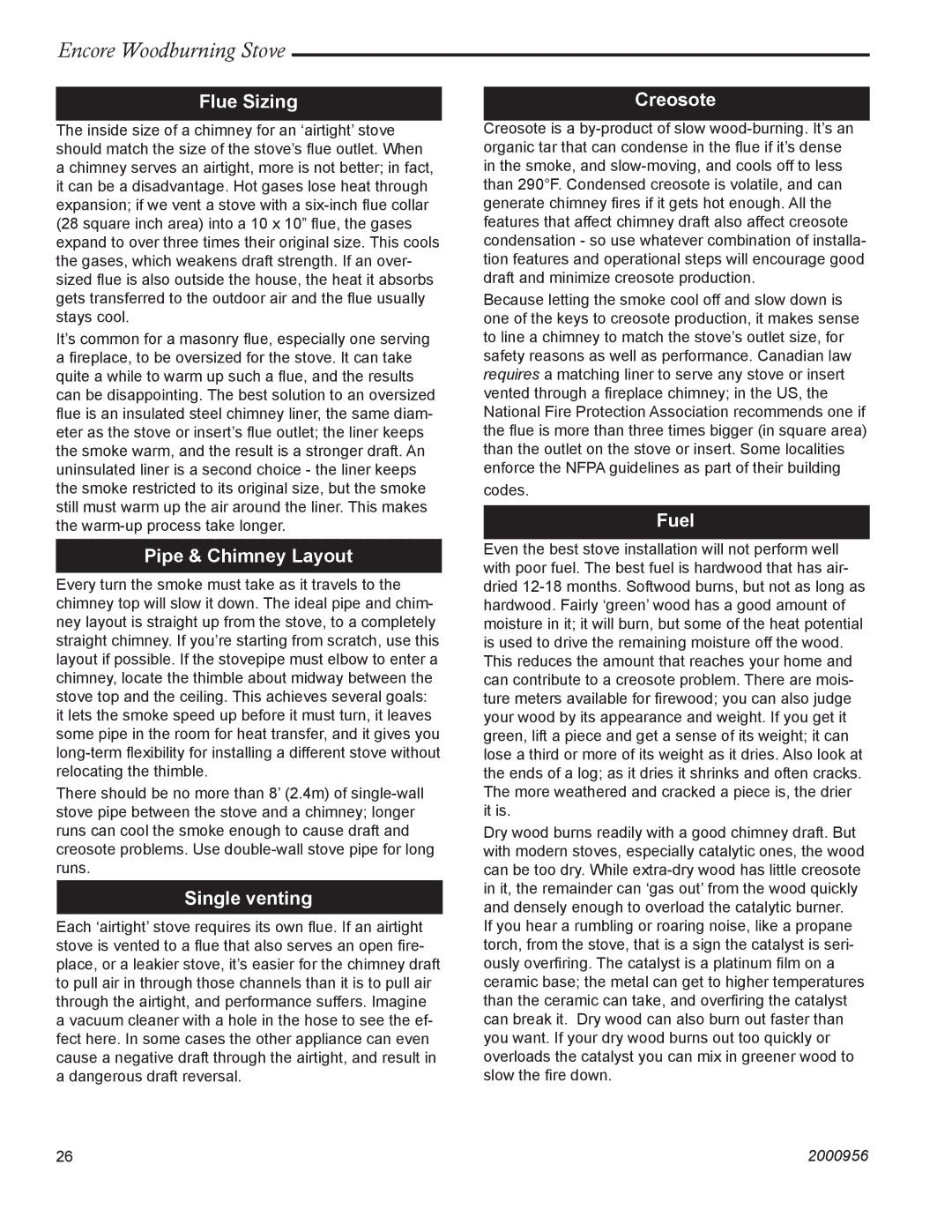
Encore Woodburning Stove
Flue Sizing
The inside size of a chimney for an ‘airtight’ stove should match the size of the stove’s flue outlet. When a chimney serves an airtight, more is not better; in fact, it can be a disadvantage. Hot gases lose heat through expansion; if we vent a stove with a
It’s common for a masonry flue, especially one serving a fireplace, to be oversized for the stove. It can take quite a while to warm up such a flue, and the results can be disappointing. The best solution to an oversized flue is an insulated steel chimney liner, the same diam- eter as the stove or insert’s flue outlet; the liner keeps the smoke warm, and the result is a stronger draft. An uninsulated liner is a second choice - the liner keeps the smoke restricted to its original size, but the smoke still must warm up the air around the liner. This makes the
Pipe & Chimney Layout
Every turn the smoke must take as it travels to the chimney top will slow it down. The ideal pipe and chim- ney layout is straight up from the stove, to a completely straight chimney. If you’re starting from scratch, use this layout if possible. If the stovepipe must elbow to enter a chimney, locate the thimble about midway between the stove top and the ceiling. This achieves several goals: it lets the smoke speed up before it must turn, it leaves some pipe in the room for heat transfer, and it gives you
There should be no more than 8’ (2.4m) of
Single venting
Each ‘airtight’ stove requires its own flue. If an airtight stove is vented to a flue that also serves an open fire- place, or a leakier stove, it’s easier for the chimney draft to pull air in through those channels than it is to pull air through the airtight, and performance suffers. Imagine a vacuum cleaner with a hole in the hose to see the ef- fect here. In some cases the other appliance can even cause a negative draft through the airtight, and result in a dangerous draft reversal.
Creosote
Creosote is a
Because letting the smoke cool off and slow down is one of the keys to creosote production, it makes sense to line a chimney to match the stove’s outlet size, for safety reasons as well as performance. Canadian law requires a matching liner to serve any stove or insert vented through a fireplace chimney; in the US, the National Fire Protection Association recommends one if the flue is more than three times bigger (in square area) than the outlet on the stove or insert. Some localities enforce the NFPA guidelines as part of their building
codes.
Fuel
Even the best stove installation will not perform well with poor fuel. The best fuel is hardwood that has air- dried
Dry wood burns readily with a good chimney draft. But with modern stoves, especially catalytic ones, the wood can be too dry. While
If you hear a rumbling or roaring noise, like a propane torch, from the stove, that is a sign the catalyst is seri- ously overfiring. The catalyst is a platinum film on a ceramic base; the metal can get to higher temperatures than the ceramic can take, and overfiring the catalyst can break it. Dry wood can also burn out faster than you want. If your dry wood burns out too quickly or overloads the catalyst you can mix in greener wood to slow the fire down.
26 | 2000956 |
